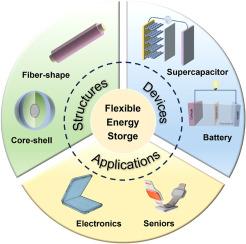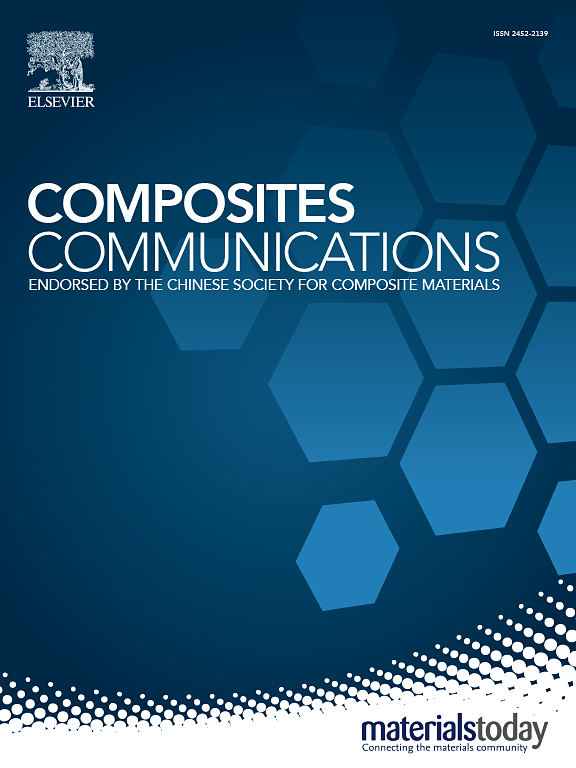用于柔性储能设备的 MOF 和 MOF 衍生复合材料
IF 6.5
2区 材料科学
Q1 MATERIALS SCIENCE, COMPOSITES
引用次数: 0
摘要
随着可穿戴电子设备和智能医疗的快速发展,柔性储能迎来了前所未有的发展。金属有机框架(MOF)是由金属离子和有机配位体通过配位作用组成的新材料,因其结构可调性强、比表面积大、能适应充放电过程中的电极变形而被广泛研究。然而,原始 MOF 通常具有导电性差、长周期稳定性差等缺点,限制了其实际应用。在此,我们将重点讨论解决这些问题的策略,包括优化结构、与导电材料结合以及获得 MOF 衍生材料。本综述全面讨论了基于 MOF 的电极的分类、改进方法和合成步骤。此外,还详细介绍了器件的整体电化学性能和灵活性。根据这些性能,还提出了 MOF 在下一代柔性储能设备中面临的主要挑战和发展前景。本文章由计算机程序翻译,如有差异,请以英文原文为准。

MOF and MOF-derived composites for flexible energy storage devices
With the rapid development of wearable electronic devices and smart medical care, flexible energy storage has ushered in an unprecedented development. The new material metal-organic framework (MOF) is composed of metal ions and organic ligands through coordination, and has been widely studied for its highly adjustable structure, large specific surface area and the ability to adapt to electrode deformation during charging and discharging. However, pristine MOF usually suffers from the poor conductivity, and the unsatisfied stability during long cycles which restricts its practical application. Herein, we focus on the strategies to solve the problems, including optimizing structures, combing with conductive materials and obtaining MOF-derived materials. In this review, the classification of MOF-based electrodes, together with the improving methods and synthesis steps, are totally discussed. Furthermore, the overall electrochemical performances and flexibility of devices are presented in detail. Based on the performances, major challenges and perspectives of MOF are also proposed for next-generation flexible energy storage devices.
求助全文
通过发布文献求助,成功后即可免费获取论文全文。
去求助
来源期刊

Composites Communications
Materials Science-Ceramics and Composites
CiteScore
12.10
自引率
10.00%
发文量
340
审稿时长
36 days
期刊介绍:
Composites Communications (Compos. Commun.) is a peer-reviewed journal publishing short communications and letters on the latest advances in composites science and technology. With a rapid review and publication process, its goal is to disseminate new knowledge promptly within the composites community. The journal welcomes manuscripts presenting creative concepts and new findings in design, state-of-the-art approaches in processing, synthesis, characterization, and mechanics modeling. In addition to traditional fiber-/particulate-reinforced engineering composites, it encourages submissions on composites with exceptional physical, mechanical, and fracture properties, as well as those with unique functions and significant application potential. This includes biomimetic and bio-inspired composites for biomedical applications, functional nano-composites for thermal management and energy applications, and composites designed for extreme service environments.
 求助内容:
求助内容: 应助结果提醒方式:
应助结果提醒方式:


